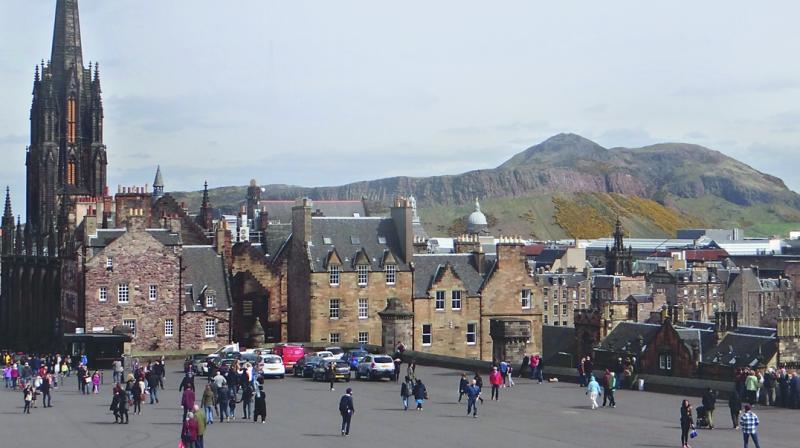Of lochs and glens
With large lakes and rolling hills on one side and vibrant cities on the other, Scotland has a little something to offer to everyone who visits.

My car pulled into Glasgow after a long, yet serene, five-hour drive from Manchester, and a rather peculiar sight greeted me, ridding me of the exhaustion that comes with road travel. There stood a statue of the Duke of Wellington, showing off his equestrian skills, bang in the middle of the city centre, with traffic cones adorning the head of both the rider and the horse.
Here was a city — even the country, as I would later learn — that did not take itself seriously. Some quick research informed me that the practice of placing the cone on the head represented the humour of Glasgow, and plans of keeping the statue cone-free was met with vehement protests.
And this served as just a great reminder of how Glasgow loved to wear its heart — and art — on its sleeve. Rarely did I find streets that didn’t have tastefully done graffiti or murals on the wall, or even on the roads. And the odd wall that didn’t have spray-painted art, had posters of upcoming gigs in the city. After all, Glasgow has the title of being one of the European capitals of culture to live up to.
A quick drive outside this young, vibrant city that almost never goes to sleep in the early summer months, and the view of clustered buildings and modish eateries gives way to sprawling lush green and stone bungalows. It’s right here where whisky distilleries have stood for centuries, laden with history and intrigue.
As I settle in for a premise tour of a single malt scotch workshop, the idyllic location to brew the tipple puts me at ease. Sipping on a 12-year-old variant of the malted whisky, I learn about how in the early 19th century, whisky in the area was produced illicitly due to lack of permission. The police camped wherever they found sources of fresh water, hoping to catch hold of the moonshine producers.
The land of lochs and glens is unsurprisingly dependent on fresh water supply to prepare one of its most important produces — the scotch.
 The traffic cone sits atop the Duke of Wellington’s statue. (Photo: Wikimedia Commons)
The traffic cone sits atop the Duke of Wellington’s statue. (Photo: Wikimedia Commons)
Just an hour and a half out of Glasgow lies Scotland’s capital city, Edinburgh. By sheer luck, the infamous and temperamental cold Scottish weather went into hiding while we toured the city, and the warm sun beat down on the city, forcing Edinburgh’s residents to come out and walk around all day.
Given the historic richness of the city, my first stop, naturally, is the Edinburgh castle. The magnificent structure sits elevated, above the rest of Edinburgh, and its largeness ensures that it’s visible from pretty much most of the city. As a tourist, locals almost always recommend that you take the royal mile to the castle, with the starting point of your walk beginning at Holyrood Palace. The name of the walk, though, is a tad misleading. The royal mile, which will take you through High Street, Canongate, and Abbey Strand, is a Scots mile long, which is longer than your regular measure of the distance.
The outer edge of the castle — once you get to it, having crossed a hundred souvenir and trinket shops — has the most breathtaking skyline of Edinburgh, with neo-gothic buildings dotting your view. The point is pretty popular with tourists too, who whip out their cameras to capture the beauty that Edinburgh has to offer.
Unbeknownst to most of these first-time visitors, every move they make can be seen closely by groups of 20 people cloistered in a dark room, a few metres away from the castle. As I would soon discover, the Camera Obscura exhibit down the road was more than just a building that houses carnival-themed distorting mirrors.
The observatory room on the top-most floor contains a contraption made of a wooden plate and high mirrors, which can project the image of most of the city into the room. It was created in the late 1800s, we were informed, when devices like these were hard to come by. And the generation that carries cameras in their back pocket balks when they hear that people actually fainted when it was first displayed, chortled our guide for the day.
Besides being paradise for history buffs, Scotland has a lot to offer food buffs too. On my last day in the country, I tucked into a seafood restaurant in one of Edinburgh’s narrow bylanes. A hot vessel of clams and some crab bisque appeared on our tables. Famished, we dug into some of the finest food Scotland had to offer, before bidding the land of the lush green rolling hills goodbye.


